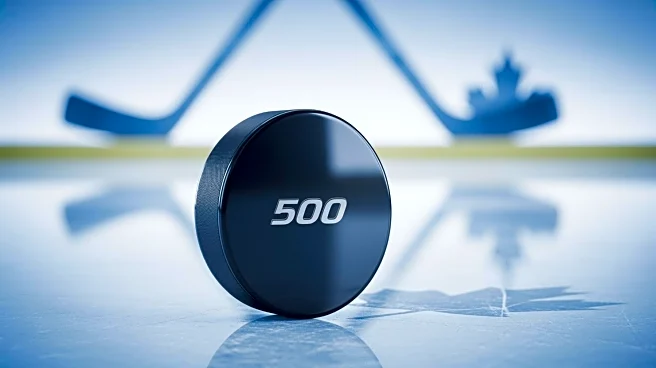What's Happening?
The National Hockey League (NHL) has relaxed its dress code, allowing players to dress in a manner consistent with contemporary fashion norms. This change, part of the new collective bargaining agreement,
marks a departure from the league's previous strict suit requirement. Players are now able to express themselves through fashion, mixing and matching different materials and brands. Teams like the Toronto Maple Leafs and Utah Mammoth have embraced this change, showcasing their players' outfits on social media platforms like Instagram and TikTok. Mammoth Defenseman Mikhail Sergachev has even hired a stylist, becoming one of the league's most fashionable players. Fans are actively engaging with this new trend, rating player outfits online.
Why It's Important?
The NHL's shift towards embracing fashion reflects a broader trend in sports where fashion plays a significant role in expanding fan engagement and business opportunities. By relaxing its dress code, the NHL is aligning itself with other major sports leagues that have successfully integrated fashion into their brand strategy. This move could potentially open new avenues for partnerships between the league, players, and fashion brands, enhancing the NHL's appeal to a wider audience. However, the league's historical resistance to change raises questions about how far it will go in nurturing this relationship with the fashion industry.
What's Next?
The NHL's embrace of fashion could lead to further developments, such as teams hiring stylists for players or the league promoting players' fashion choices more actively. This could result in increased collaboration with fashion brands and designers, potentially boosting the league's visibility and commercial opportunities. The success of this initiative will depend on the NHL's willingness to continue evolving and adapting to contemporary cultural trends.
Beyond the Headlines
The NHL's move to relax its dress code may have deeper implications for the league's culture and identity. Historically known for its conservative approach, this change could signal a shift towards a more progressive and inclusive image. It also highlights the growing influence of social media in shaping public perception and engagement with sports, as fans increasingly interact with players' fashion choices online.












